INDIAN ARMED FORCES CHIEFS ON
OUR RELENTLESS AND FOCUSED PUBLISHING EFFORTS

SP Guide Publications puts forth a well compiled articulation of issues, pursuits and accomplishments of the Indian Army, over the years

I am confident that SP Guide Publications would continue to inform, inspire and influence.

My compliments to SP Guide Publications for informative and credible reportage on contemporary aerospace issues over the past six decades.
- Prime Minister witnesses 'Bharat Shakti' – a Tri-Services Firing and Manoeuvre Exercise in Pokhran, Rajasthan
- Interim Defence Budget 2024-25 — An Analysis
- Union Defence budget 2024
- Prime Minister Modi Commemorates Indian Navy Day in a Grand Ceremony
- Prime Minister Modi Flies in the LCA Tejas
- New Chapter in India-Italy Defence Ties
- Airpower beyond Boundaries
Aerospace sector key enabler of economic growth
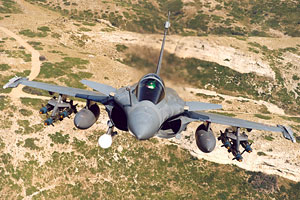
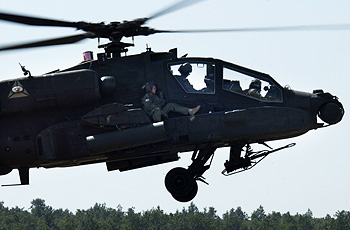
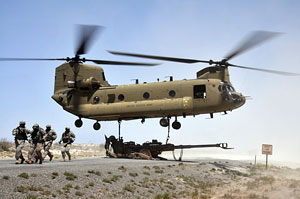
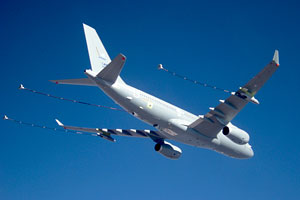
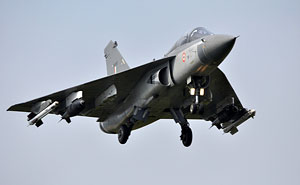
During the last two shows, the monumental medium multi-role combat aircraft (MMRCA) didn't have a winner yet, and several other big-ticket aerospace acquisitions revolved around it like smaller satellites, also waiting for clarity and a verdict. Aero India 2013 takes place a year after MMRCA decision-makers chose the Dassault Rafale as the lowest compliant bidder, ousting the EADS Eurofighter Typhoon. The show also takes place shortly after Indian acquisition officials have chosen the US built CH-47F Chinook and AH-64D Apache Block III over the Russian Mi-26T2 and Mi-28 Night Hunter respectively for the Indian Air Force’s heavy-lift and attack helicopter requirements. In that sense, there is less frenzied anticipation. Less intrigue. Less tumult. But that doesn't mean there isn’t work to be done, technologies to be shared, opportunities to be explored and created.
For starters, one of India’s least known or reported – but perhaps most crucial – hardware competitions circles around the acquisition of 197 light reconnaissance and surveillance helicopters (RSH) for the Army and IAF. Two months ago, the two finalists in the arduous, meandering competition – Eurocopter and Kamov – were instructed to extend the validity of their commercial bids for the fourth time, a record of sorts even in the notoriously unhurried regime that is Indian defence contracting. The companies have duly done so, but are both anxiously awaiting a decision, either way. It has been nearly five years since the MoD issued RFPs for the requirement in 2008. Aero India 2013 could have provided a perfect platform for an announcement of a winner – but will that happen? Eurocopter which burnt its fingers badly once before has tried, without success, to engage with the government on a speedy decision, but so far there seems little clarity on which way the MoD will decide – indeed, if it will decide at all. The opacity of the decision-making process makes it that much more difficult to define the next move. The programme also impinges on HAL's light utility helicopter (LUH) programme – a mock-up of the helicopter makes a return to Aero India this year. HAL looks to service a requirement of 184 LUHs, to operate in conjunction with the 197 RSHs. But with the RSH delayed, and the LUH still only a scale model – even an engine hasn't been decided just yet, though that will be a point of focus at this year’s show – there isn't much good news for the Indian Army and IAF, both of which desperately need these helicopters for high altitude multi-role operations.
The Indian Air Force's ambitious replacement programme for its HS-748 Avro transport aircraft is also expected to take wing, after an abortive attempt to rope Indian private companies in on it. The project is now wide open for vendors the world over. Companies like EADS and Lockheed Martin will be focusing their strategies at Aero India, for instance, on the C295/C295 and C-130J Super Hercules programmes respectively as possible replacements for the Avro in Indian Air Force service.
Enormous opportunities exist for unmanned air systems across the board in India. Apart from continuing opportunities to procure full systems – the Indian Navy is looking for a maritime MALE system, the Indian Army is looking for a man-portable MAV system to name just two instances – there are several co-development opportunities as well, both ab-initio as well as mid-course programmes. It is virtually certain that with pressing time-lines and impatient customers, HAL and DRDO will be forced to draft in the help of experienced consultants to complete current programmes. For instance, the Rustom-2 MALE multi-role UAV, which was expected to make its first flight this year, requires a serious nudge in terms of data link, comm/nav systems and sensors. The Indian Unmanned Strike Air Vehicle (IUSAV) is a hugely ambitious UCAV programme that is still in a project definition stage, but could provide big opportunities. Boeing and Elbit will be debuting their maritime UAS – the Scan Eagle and Hermes 900 maritime – at the show. Companies that include BAE Systems, EADS Cassidian and Saab are involved at various levels in discussions with DRDO on co-developing UAS for the Indian military.
Another recently floated requirement in the Indian market is the Indian Navy's search for a new medium-range anti-ship missile, while the Army continues its search for a stand-off loitering weapon – incidentally India plans to test its first loitering cruise weapon, designated Nirbhay this month. A big-ticket missile programme entering its final leg in India is the VSHORADS (very shortrange air defence system), currently a three-way fight between the French MBDA Mistral, Sweden's Saab RBS 70 NG and Russia’s KBM new generation Igla-S – all three systems are on display at Aero India 2013. The deal could be worth $6-billion and involve the purchase of 1,000 launchers with 6,000 missiles. MBDA, which had tasted sweet success a year ago with the Indian Government handing it a €950-million deal for MICA air-to-air missiles for the IAF's upgraded Mirage 2000 multi-role fighters, the company is now eagerly awaiting the results of the competition to supply short-range IR air-to-air missiles for the IAF's Jaguars. MBDA and Israel’s Rafael await a verdict on what is a toss-up between MBDA's ASRAAM and Rafael’s Python 5.
Another key area where several opportunities could arise just about now is the realm of India's indigenous fighter programmes – the light combat aircraft (LCA Tejas) that is on a finishing run, and requires the possible nudge over the finishing line, and the ambitious fifth-generation advanced medium combat aircraft (AMCA). Several indigenous programmes including the delayed Indian multirole helicopter (IMRH), light utility helicopter (LUH), multi-role transport Aircraft (MTA) and others could throw up very serious sourcing and other opportunities for foreign and Indian vendors at every level. Another enormous opportunity is the Indian National Civil Aircraft (NCA), which by itself, could present the most profound spaces for cooperation in new technologies.
India's light combat aircraft ought to be the centrepiece of any Indian air or defence exposition. In a few years, perhaps it will be able to show off its squadron colours to adoring crowds as foreign fighters now do. But for now, there is still much work to be done – and this draws deep, sobering attention once again to the enormous journey the Indian aerospace establishment has to tread. As Aero India 2013 dawns, as the mood sets in, it is imperative that the establishment and test teams be less forgiving with themselves and with what is expected of them. The light combat aircraft was an idea that took birth during a deeply socialist phase of India. It's final lap happens at a time when the country recedes each day from those ideals of yore, into a far more egalitarian, far more promising regime. But will it ever get there? For now, the Indian Air Force's eyes are fixed on the MMRCA fighter but that doesn't mean it has given up on the Tejas, a fighter it will hopefully operate in large numbers over the years, and over several variants.
At this point, the Tejas development programme is in an advanced stage and on the road to completing initial operation clearance (IOC-2) requirements and continuing system performance towards reaching final operations Clearance (FOC). The type, across prototypes and limited series vehicles has completed 1986 flawless flight trials till date, including cold weather and high altitude trials at Leh and Pathankot, and hot weather & weapon trials in the desert terrains of Jaisalmer and Uttarlai. According to the Aeronautical Development Agency (ADA), LCA will be participating for the first time in an airpower demonstration called “Iron Fist”. There, it will demonstrate its swing-role capability, performing air-to-air and strike roles in the same mission, say officials. The IAF has placed production orders on HAL for 40 LCAs and production activity is under progress. The LCA’s other variants include the two-seater LCA-Trainer and LCA-Navy, being built to take off and land from aircraft carrier decks. The naval version of Tejas had its maiden flight in April last year. But the variant is now delayed by an elaborate landing gear redesign for which the ADA has had to seek foreign help, considering building a naval fighter has been a first time effort for the Indian military-industrial complex.
It is clear, therefore, that aerospace in India is healthy, well and positively burgeoning with opportunities. Recently reported slashes in the Indian defence budget will take time to reflect in programmes that are already on course, and with pressure from the forces, it is unlikely that crucial programmes will be deferred more than they already have been. It remains an exciting time in Indian aerospace.





